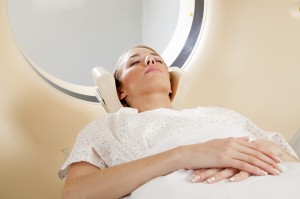The Signs and Symptoms of Breast Cancer
 Unfortunately, many women who develop breast cancer do not experience any symptoms from this disease. While physiological alterations, such as a lump in the breast, may be present, these things might be too small for women (or men) to detect on their own. In most cases, breast cancer will not be detected until the tumor has gotten bigger, and it has been identified in during routine mammogram (an important part of breast cancer screening techniques). If you have been diagnosed with breast cancer, then you may be interested in taking part in one of the many breast cancer clinical trials being conducted around the country.
Unfortunately, many women who develop breast cancer do not experience any symptoms from this disease. While physiological alterations, such as a lump in the breast, may be present, these things might be too small for women (or men) to detect on their own. In most cases, breast cancer will not be detected until the tumor has gotten bigger, and it has been identified in during routine mammogram (an important part of breast cancer screening techniques). If you have been diagnosed with breast cancer, then you may be interested in taking part in one of the many breast cancer clinical trials being conducted around the country.
Now, it is very important for women to perform self-breast examinations on a regular basis. This way, you can get a better feel for how your breasts feel normally, and you’ll be more apt to notice any significant changes that might signal breast cancer. Any form of irregularity that is discovered should be reported to your doctor. Painless lumps in the breasts that are painless and have soft edges are strongly associated with breast cancer.
Common Symptoms of Breast Cancer
If it is breast cancer, women may experience any of the following signs and symptoms:
- Swelling of part of the breast
- Entire breast swollen
- Skin irritation or dimpling on the breast • Nipple pain
- Breast pain
- Bleeding out of the nipples
- Nipple discharge (not breast milk)
- Nipple turning inward
- Lump in the breast
- Lump in the underarm area
- Change in the shape of the breast
- Change in the size of the breast
- Scaly skin
- Thickening of the nipple or breast skin
- Redness of breast
Other Underlying Breast Disorders
A lot of the symptoms associated with breast cancer could also be caused by other breast disorders, like an infection or a cyst. Whatever it is, diagnostic tests can provide accurate identification. In many cases, these particular symptoms will not be indicative of cancer. However, it is very important that you get checked out by your doctor if you experience any of these symptoms. There also may be circumstances where the skin of the breast or nipple feels thicker than usual. While this may not seem like much, this is could actually be a symptom of breast cancer and needs to be reported to your doctor.
Breast Composition
No two women have the exact same breast composition. A lot of women may find that their breasts feel a little lumpy when performing a self-exam. This is because breast tissue has a naturally lumpy feel to it, and it is usually not an indication of breast cancer. If both breasts feel lumpy, and they both have the same texture, then there is no need to worry. The thing to be worried about is a lump that you haven’t noticed before, and it feels different than the rest of the breast.
It is very important that women continue to undergo routine screening for breast cancer, especially as they get older. If you believe that you may actually have breast cancer or any other breast disorder for that matter, contact your doctor and schedule a clinical breast exam. When it comes to breast cancer, early detection means a better chance that it can be treated successfully either with surgery or approved drugs.